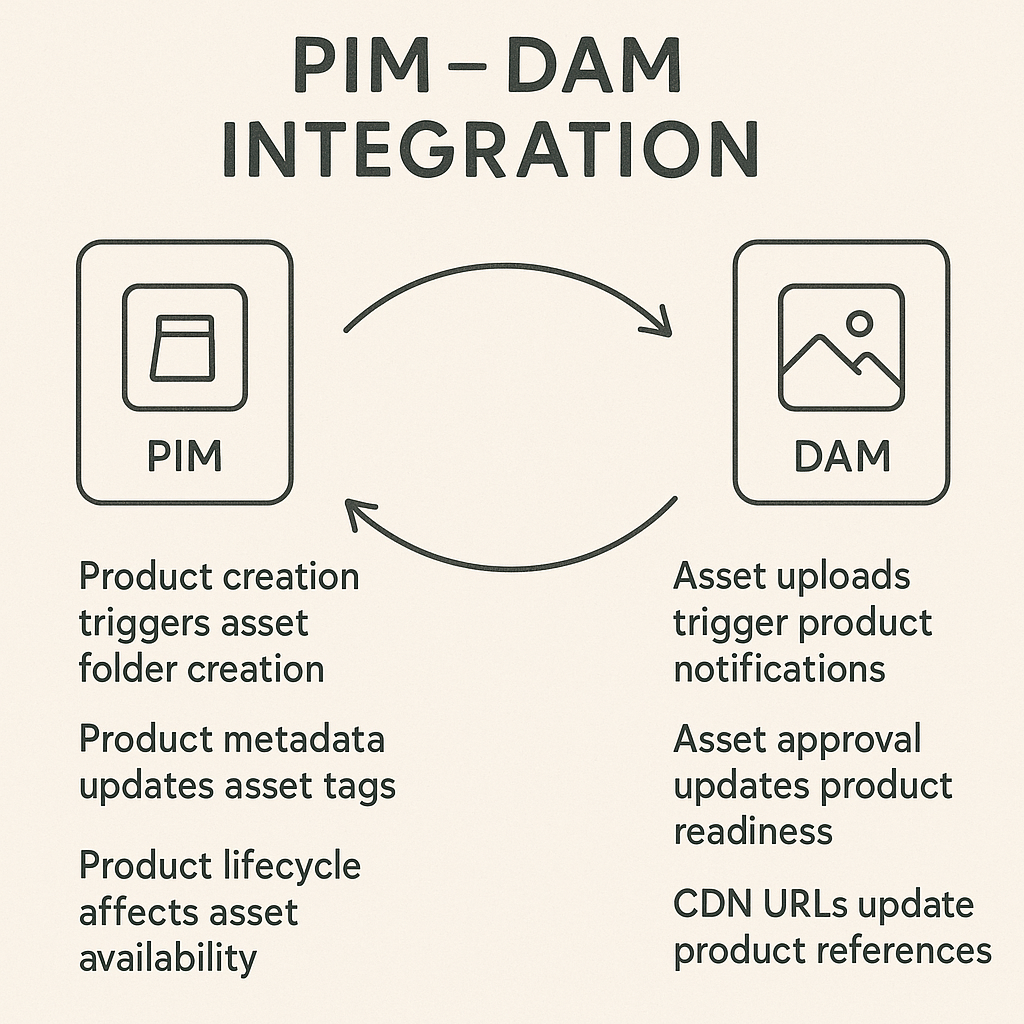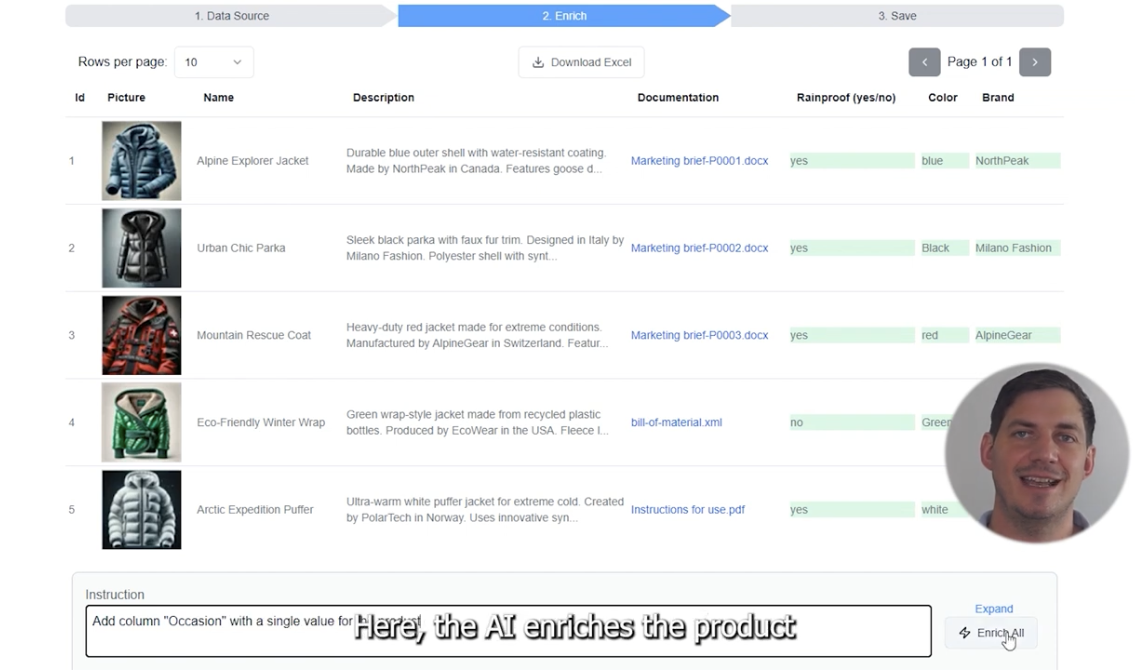Platform Overview
Pimcore is an open-source Digital Experience Platform (DXP) that combines PIM, DAM, MDM, CMS, and e-commerce in a single Symfony-based framework. Founded by Austrian entrepreneurs, Pimcore offers a unique approach where product data management is integrated with content management and digital asset management in one unified platform.
The platform's Object Class system provides flexible schema definition for any business entity, while the Classification Store enables dynamic attribute extension for locale and channel-specific requirements. This architecture makes Pimcore particularly suitable for complex, multi-domain implementations.
Key Facts
- Founded: 2010
- Headquarters: Salzburg, Austria
- Architecture: Symfony-based PHP framework
- License: Open source with enterprise support
- API: REST and GraphQL with DataHub

Pimcore PIM login page interface
The Pimcore login interface reflects the platform's modern, developer-friendly approach to digital experience management.
Core entities in Pimcore's object-oriented data model with flexible schema definition and relationships
| Entity | Vendor Name | Description | Key Attributes | Relationships |
|---|---|---|---|---|
Object Class | Object Class | Schema definition template that defines fields, data types, and relationships for business objects | field definitions data types inheritance rules | defines structure for Objects supports inheritance |
Product | Data Object | Instance of an Object Class; can be hierarchical via parent/child tree structure | class-defined fields inheritance values relationships | instance of Object Class hierarchical parent/child links to Assets |
Variant | Object Variant | Inherits attributes from parent object with ability to override specific values | inherited attributes override values variant-specific data | child of parent Object inherits from Object Class |
Asset | Asset | Digital file stored in central DAM with metadata, versions, and thumbnails | file data metadata versions thumbnails | linked to Objects organized in folder structure |
Document | Document | CMS page that can embed and display product data from Objects | content layout embedded object data | embeds Object data part of site structure |
Classification Store | Classification Store | Dynamic attribute system for locale and channel-specific key/value pairs | dynamic keys locale scope channel scope | extends Objects provides flexible attributes |
New to PIM systems?
Before diving into Pimcore specifics, you might want to read our detailed guide to PIM systems to understand the fundamentals and key concepts.
Read PIM Systems GuideComplete list of data types available in Pimcore Object Classes with their capabilities and use cases
| Common Name | Vendor Name | Description | Operators | Examples |
|---|---|---|---|---|
Text | Input, Textarea, Markdown | Text fields with validation options (Email/URL/Regex) | = != LIKE NOT LIKE EMPTY NOT EMPTY | Product name Description SKU |
Rich Text | Wysiwyg | HTML rich text editor for formatted content | LIKE NOT LIKE EMPTY NOT EMPTY | Product description Marketing copy Instructions |
Number | Numeric | Numeric fields supporting integer, float, and double | = != < <= > >= BETWEEN EMPTY NOT EMPTY | Price Weight Dimensions |
Boolean | Boolean | Checkbox or toggle for true/false values | = (true/false) | Is active Featured Discontinued |
Date | Date, Datetime | Date and datetime fields with timezone support | = != < <= > >= BETWEEN EMPTY NOT EMPTY | Launch date Last modified Expiry date |
Single Select | Select | Dropdown with predefined options | = != IN NOT IN EMPTY NOT EMPTY | Brand Category Status |
Multi Select | Multiselect | Multiple selection from predefined options | IN NOT IN EMPTY NOT EMPTY | Features Materials Certifications |
Asset Reference | Image, Video, Asset | Reference to assets stored in Pimcore DAM | EMPTY NOT EMPTY | Product images Videos Documents |
Object Reference | Objects, Object | Reference to other data objects (single or multiple) | = != IN NOT IN EMPTY NOT EMPTY | Related products Brand reference Category links |
Classification Store | Classificationstore | Dynamic key-value pairs with locale and channel scoping | EMPTY NOT EMPTY | Channel-specific attributes Locale-specific data Dynamic properties |
Structured Table | StructuredTable | Table with predefined columns for structured data | EMPTY NOT EMPTY | Technical specifications Nutrition facts Size charts |
Geographic Data | Geopoint, Geobounds, Geopolygon | Geographic coordinates and shapes | EMPTY NOT EMPTY | Store locations Delivery areas Geographic restrictions |
Measurement | Quantity Value | Numeric value with unit measurement | = != < <= > >= BETWEEN EMPTY NOT EMPTY | Length in cm Weight in kg Volume in liters |
Explore strategic approaches and real-world implementations that inform Pimcore adoption decisions.
API Implementation Details
REST & GraphQL APIs
Pimcore offers both REST (/webservice/rest) and GraphQL (/graphql) APIs through the DataHub bundle. The GraphQL API provides flexible querying with locale and channel filters, while the REST API offers traditional CRUD operations with SQL-like condition parameters.
DataHub Transformations
The DataHub system enables channel-specific attribute mapping and transformations, allowing different data structures for various output destinations (Amazon, GS1, custom APIs). This provides powerful syndication capabilities without data duplication.
Object Class Flexibility
The Object Class system allows creation of unlimited custom entity types with identical modeling capabilities to Products. Custom entities support inheritance, relationships, all attribute types, and full CRUD operations through the API.
Workflow Integration
Built on Symfony's workflow engine, Pimcore provides sophisticated approval processes and state management. Workflows can be configured per Object Class with custom transitions and permissions.
Developer Experience
As a Symfony-based framework, Pimcore offers familiar development patterns for PHP developers. The platform includes comprehensive documentation, TypeScript GraphQL examples, and active GitHub repositories with community contributions.
API Usage Example
Example showing how to query and update a product using Pimcore's GraphQL API
import { request, gql } from 'graphql-request'
const endpoint = 'https://demo.pimcore.com/graphql/products'
const token = '<api_key>'
const query = gql`
query GetProduct($sku: String!) {
getProduct(sku: $sku) {
id
name
description_en
}
}
`
request(endpoint, query, { sku: 'SKU-12345' }, { Authorization: `Bearer ${token}` })
.then(data => {
const id = data.getProduct.id
// update name
return request(endpoint, gql`
mutation Update($id: Int!) {
updateProduct(id: $id, input: { name: "New name 2025" }) { id }
}`, { id }, { Authorization: `Bearer ${token}` })
})Technical Specifications
Digital Experience Platform
Pimcore uniquely combines PIM, DAM, MDM, CMS, and e-commerce in a single platform. This integrated approach enables seamless content and product experiences across all touchpoints.
Enterprise DAM Capabilities
Built-in enterprise-grade asset repository with image, video, 3D, and document preview. Features include AI tagging integrations (Google Vision, Amazon Rekognition), versioning, rights metadata, and dynamic thumbnail transforms.
Classification Store
Dynamic attribute system allows runtime addition of key/value pairs with locale and channel scopes. This provides flexibility for market-specific attributes without schema changes.
Web-to-Print Integration
Native support for automated catalog generation and print workflows, making Pimcore particularly strong for businesses requiring both digital and print output.
Strategic considerations for implementing Pimcore's unified platform approach in enterprise environments.
Pimcore's open-source foundation with enterprise support options requires sophisticated contract negotiations that balance platform freedom with vendor relationship management.
Limitations & Implementation Considerations
Open Source Licensing Complexity
While the core platform is open source, it's often unclear which features require paid licenses or enterprise partnerships. Advanced API capabilities, event handling systems, and certain marketplace bundles may require commercial agreements that aren't immediately apparent from documentation.
Technical Resource Requirements
The Symfony-based architecture requires strong PHP development expertise to fully leverage. Organizations without dedicated technical teams may struggle with customization, deployment, and ongoing maintenance of the unified platform.
Unified Platform Complexity
While the integrated PIM+DAM+CMS approach eliminates integration challenges, it can create complexity for teams that only need PIM functionality. The unified architecture may be over-engineered for organizations with simpler product data management requirements.
Enterprise Support Dependency
Complex implementations often require enterprise support contracts to navigate licensing clarity, advanced configuration, and production deployment best practices. The open source model can create uncertainty around support availability for critical business functions.
Performance Scaling Considerations
The unified platform approach can impact performance when managing large product catalogs alongside content management and e-commerce functionality. Proper infrastructure planning and optimization expertise are essential for enterprise-scale deployments.
Expert Perspective
"Pimcore's strength lies in its unified approach - having PIM, DAM, CMS, and e-commerce in one platform eliminates the integration headaches you typically face with best-of-breed solutions. The Object Class system provides incredible modeling flexibility."
"The Symfony foundation makes it very developer-friendly for PHP teams, but you need strong technical resources to fully leverage its capabilities. The open-source model provides excellent value, but enterprise support is essential for complex implementations."— Sivert Kjøller Bertelsen, PIM Implementation Expert
Key Benefits & Strengths
Unified Digital Experience Platform
Unique integration of PIM, DAM, MDM, CMS, and e-commerce in a single platform eliminates data silos and enables seamless omnichannel experiences. Content and product data work together natively.
Complete Open Source Freedom
No licensing costs for the core platform with full source code access. This provides maximum flexibility for customization and eliminates vendor lock-in concerns.
Object Class System
Flexible schema definition allows modeling of any business entity with full attribute richness. Custom Object Classes have identical capabilities to built-in entities, supporting complex business requirements.
Developer-Friendly Architecture
Built on Symfony framework with familiar PHP development patterns. Comprehensive APIs (REST and GraphQL), extensive documentation, and active community support accelerate implementation.
Enterprise DAM Integration
Built-in digital asset management with AI tagging, dynamic transformations, and CDN delivery. Assets are natively integrated with product data for seamless media management.
Advanced Workflow Engine
Symfony-based workflow system provides sophisticated approval processes and state management. Configurable per entity type with custom transitions and role-based permissions.
Customer Review
Sivert Kjøller Bertelsen
PIM Implementation Consultant • Pimcore evaluation experience
"Pimcore offers significant value as a complete digital experience platform. The unified architecture can reduce integration complexity while providing enterprise-grade capabilities. The Object Class system is incredibly flexible, though this is reflected in a more complex user interface. It's often confusing what features are truly open source versus what requires paid licenses. While I have not completed a full implementation, my evaluation indicates that for organizations with PHP development capabilities, Pimcore delivers comprehensive functionality, but it is important to budget for potential licensing clarity discussions."
"From a technical implementation standpoint, Pimcore's licensing model requires careful evaluation. While the core is open source, determining which advanced features require enterprise partnerships isn't always straightforward. I recommend thorough testing of your specific API requirements and workflow needs during the evaluation phase to avoid licensing surprises later."



